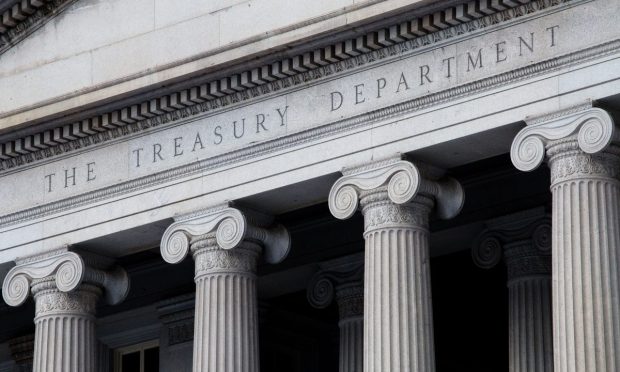Treasury Under Secretary Adds FedNow to Stablecoin vs Digital Dollar Debate

In all the heated debates about regulating stablecoins and creating a digital dollar, the U.S. Treasury Department has been remarkably quiet about its own existing real-time payments service, FedNow.
That seemed to change on Tuesday (March 22), when Treasury Under Secretary for Domestic Finance Nellie Liang told attendees of the National Association for Business Economics conference in Washington, D.C. that bank-based FedNow provides many of the benefits of those alternative payments rails without the risk or the time required to implement them.
“Because FedNow relies on the banking system, there already are safeguards for consumers and businesses,” Liang said, according to Bloomberg. “Bank-based money usually has deposit insurance and banks are generally eligible to obtain access to the lender of last resort. These two backstops help to ensure that bank money is not runnable.”
The 24-hour, 365-day FedNow system promises inexpensive, near-instant interbank payments, and is expected to be up and running before the end of next year.
See also: FedNow’s Progress on Instant Payments May Weaken Case for Digital Dollar
Safer than stablecoins and ready far sooner than a digital dollar — a bare minimum of four years off — FedNow offers a solid and more desirable alternative to both stablecoins and a central bank digital currency (CBDC), her comments made clear.
Which, if the Treasury keep advocating for its new real-time payments system, could mark a turning point in the stablecoin versus CBDC question, turning it into a three-way debate.
Unstablecoins
One of the principal fears central bankers, financial organizations, and finance ministries around the globe share with the Treasury Department is that stablecoins present a risk to national financial systems, because they present a greater “run risk” as well as the threat of disrupting the traditional payments market.
The problem, Liang told the House Financial Services Commitee last month, is that if investors fear the issuer does not have the backing assets to redeem its stablecoins, it could cause a loss of confidence that “sets off a wave of stable-coin redemptions, which could then be followed by distressed sales of the stablecoin’s reserve assets. Such distressed sales of assets could negatively affect critical funding markets and broader financial conditions.”
Beyond that, by allowing people to bypass national currencies altogether, stablecoins take away some of the main tools central bankers and governments have to stave off financial crises in economic downturns — which can result in bank-killing runs.
Read more: US House Urged to Pass New Legislation on Stablecoins
While she is correct in saying there is “broad agreement” that the $180 billion-plus stablecoin market must be regulated to address its risks, there is not such a consensus on how to regulate it. The discussion breaks on partisan lines.
Liang said yesterday that stablecoin regulation is currently “inconsistent,” potentially causing uncertainty among users.
In the President’s Working Group on Financial Markets’ November stablecoin report — chaired by Treasury Secretary Janet Yellen — the Biden Administration proposed requiring their issuers to be insured depository institutions, which are already heavily regulated.
Yet Federal Reserve Chairman Jerome Powell — appointed by President Donald Trump and retained by President Joe Biden — called that proposal “perplexing” while Sen. Cynthia Lummis (R-WY) argued that it is “misguided and wrong” to impose the FDIC insurance requirement as long as less onerous regulations creating “prudential risk management” are put in place.
Digital Dollar Dilemma
As for a digital dollar, Liang pointed out that a Fed-issued CBDC would offer the same benefits as stablecoins — inexpensive, real-time transactions — without any of the financial risks and regulatory requirements.
“Because FedNow relies on the banking system, there already are safeguards for consumers and businesses,” Liang said. “Bank-based money usually has deposit insurance and banks are generally eligible to obtain access to the lender of last resort. These two backstops help to ensure that bank money is not runnable.”
Beyond that, a digital dollar is far off, with years of design and technical questions to be hammered out and tested even after the current debate on whether one is necessary is resolved — and a recommendation is at least six months off, when President Biden’s Executive Order on cryptocurrency regulation requires a multi-agency recommendation on the issue.
See also: Biden’s Executive Order Set to Fast-Track Crypto Policy
Liang argued that the FedNow system provides many of a legal tender digital dollar that fits into current payments regulation with such a long delay.
Beyond that, there are private real-time payment alternatives to FedNow, such as The Clearing Houses’ RTP Network, that are already up and running.
Also read: Payments Execs Say Fed Has Yet to Make Compelling Case for CBDC
“The value of the dollar is based in the core of the U.S. — the rule of law, the institutions, the depths of the financial markets, protections of privacy,” Liang said.
